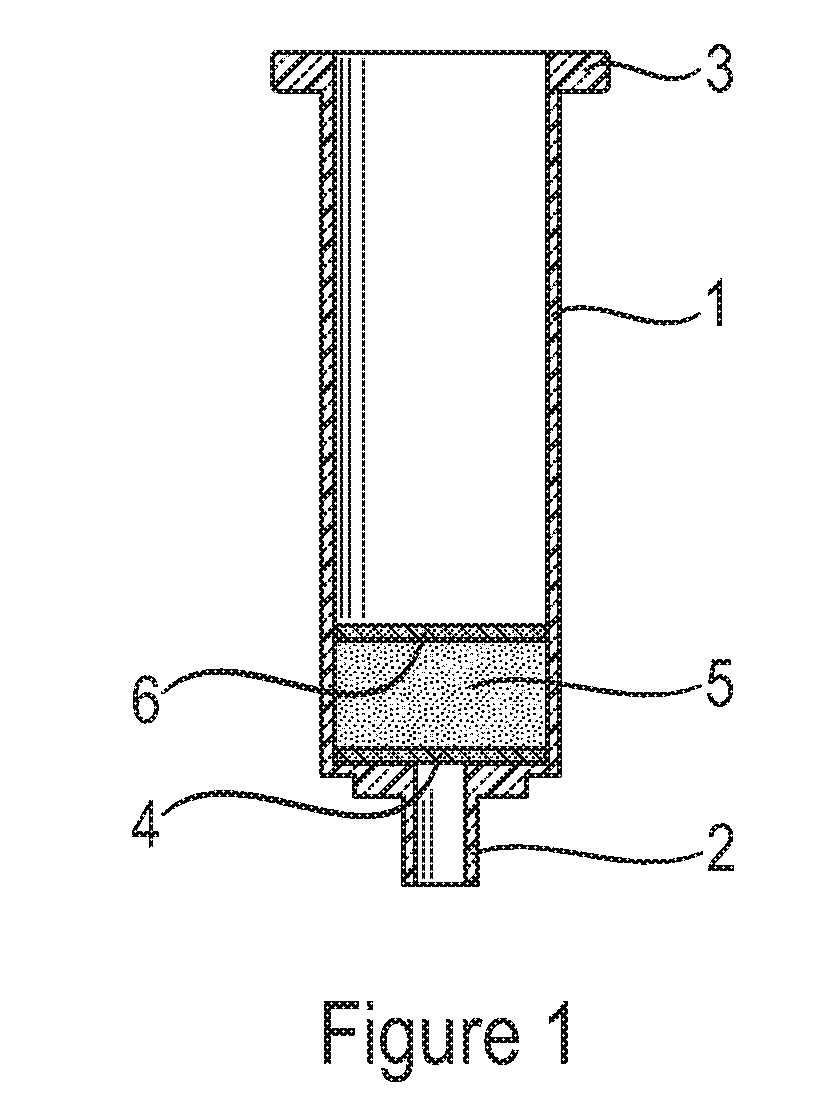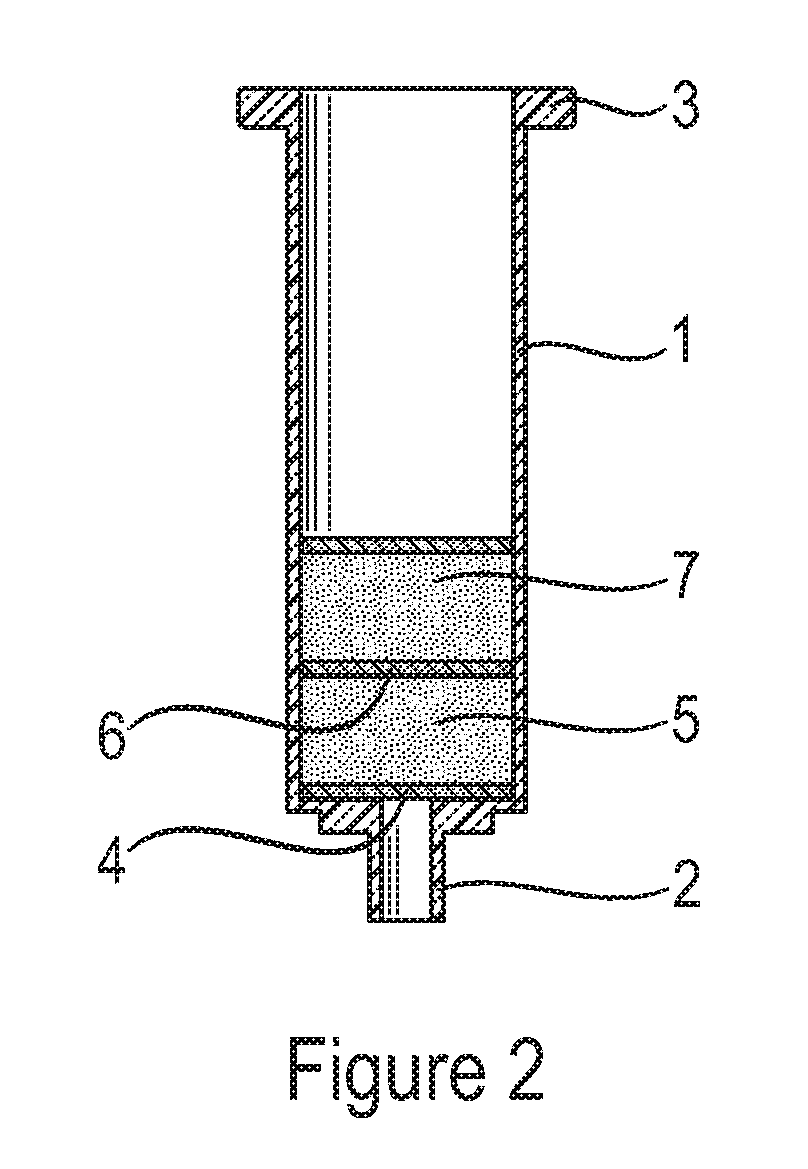Solid phase extraction of alfatoxins
a technology of alfatoxins and solid phase extraction, applied in the field of polymer, can solve problems such as human food and animal feed, and be susceptible to contamination
- Summary
- Abstract
- Description
- Claims
- Application Information
AI Technical Summary
Benefits of technology
Problems solved by technology
Method used
Image
Examples
example 1
[0046]Preparation of Polymer
[0047]A polymerisation mixture was prepared by stirring the functional monomer methylene bisacrylamide (MBAA), 5 g; a cross-linker ethylene glycol dimethacrylate (EGDMA), 20 g, a porogen N,N-dimethylformamide (DMF), 25 g; and an initiator 1,1-azobis(cyclohexanecarbonitrile), 500 mg. The polymerisation mixture was illuminated for 20 min using a Hönle 100 UV lamp (intensity 0.157 W / cm2) (Hönle UV, UK) followed by thermo-annealing in an oil bath at 80° C. for 12 hours. Washing with methanol removed the solvent (DMF) and the resulting polymer was a macroporous material. The resultant bulk polymers were ground and wet-sieved in methanol. The fraction with particle size in the range from 25 to 63 μm was collected and dried.
[0048]After preparation, 75 mg of polymer were added to empty 1 ml non-fluorescent plastic cartridges (Supelco UK) fitted with non-fluorescent Teflon (PTFE) frits (Supelco UK)
example 2
[0049]Immobilisation of AFB1 on MBAA-Based Polymer
[0050]Cartridges prepared as in Example 1 were pre-conditioned by addition of 2 ml water (e.g. HPLC grade water). Solutions of aflatoxin B1 (AFB1) in 4 ml of methanol (concentration of methanol varied from 80% to 20%, concentrations of AFB1 varying from 10 to 200 ng) were added to the cartridge to load the aflatoxins onto the layer of MBAA polymer. The cartridge was then washed to remove interfering compounds using 1 ml of 20% methanol (80:20, water:methanol). The presence of a layer of the aflatoxins immobilised in the layer of MBAA polymer was shown by observing the fluorescence generated by exposure to UV light, by utilising a sensor device as disclosed in WO 2006 / 120381.
[0051]A sharp fluorescent band was observed directly under the top frit of the SPE cartridge. The sensitivity of detection of AFB1 on MBAA-based polymer was very good, especially when adsorbed from 20% methanol.
example 3
[0052]Immobilisation of Aflatoxins B1, B2, G1, & G2
[0053]Subsequently, 20% methanol solution was spiked with 100 ng of AFB1, AFB2, AFG1 and AFG2 toxins and loaded into individual cartridges, prepared as in Example 1, followed by a wash with 1 ml of 20% methanol. It was found that all toxins are adsorbed in very similar places, close to the top-frit.
PUM
| Property | Measurement | Unit |
|---|---|---|
| emission wavelength | aaaaa | aaaaa |
| particle size | aaaaa | aaaaa |
| temperature | aaaaa | aaaaa |
Abstract
Description
Claims
Application Information
 Login to View More
Login to View More - R&D
- Intellectual Property
- Life Sciences
- Materials
- Tech Scout
- Unparalleled Data Quality
- Higher Quality Content
- 60% Fewer Hallucinations
Browse by: Latest US Patents, China's latest patents, Technical Efficacy Thesaurus, Application Domain, Technology Topic, Popular Technical Reports.
© 2025 PatSnap. All rights reserved.Legal|Privacy policy|Modern Slavery Act Transparency Statement|Sitemap|About US| Contact US: help@patsnap.com



